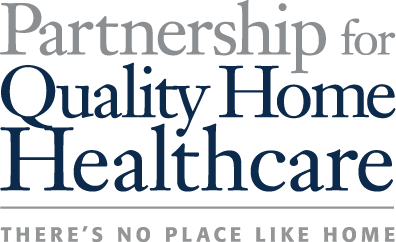August 29, 2013
Home Health Firms Ask CMS To Ease Pay Cuts As MedPAC Seeks Larger Reductions
Posted in: News
Inside Health Policy
Home care and hospice lobby groups are asking CMS to thoroughly analyze the home health sector and ease the 14 percent rebasing cuts that are scheduled to phase in over the next four years before finalizing the 2014 home health payment rule, but Congress’ Medicare payment advisers say even the health law’s maximum rebasing cuts — which CMS proposed — are too small.
CMS proposed to cut home health pay overall by 1.5 percent in the 2014 proposed pay rule released in June, when factoring in a 2.4 percent pay increase ($460 million increase), a non-routine medical supplies conversion factor ($650 million decrease), ICD-9 coding adjustment ($100 million decrease) and 3.5 percent cut for the first year of rebasing the national, standardized 60-day episode pay rate. The 3.5 percent cuts are scheduled to continue until 2017, as the Affordable Care Act requires that starting with 2014, CMS adjust the national, standardized rate for a 60-day episode.
The home health lobby groups, however, say CMS was not required to implement such steeps cuts, as the law capped the cuts CMS could institute at 3.5 percent. The National Association for Home Care and Hospice, Visiting Nurse Associations of America, and Partnership for Quality Home Healthcare say most states will lose money on Medicare payments if the cuts go into effect, as the home health sector will have absorbed almost $100 billion since 2009. CMS decided to recommend the deepest allowable cut, former Louisiana Republican House Energy and Commerce Chair Billy Tauzin, who is a lobbyist for the home health industry, said on a teleconference Wednesday (Aug. 28), even though the law gives CMS discretion “to do something better.”
“Despite claims by CMS they have no other option but to rebase at this higher percentage, we respectfully disagree,” Tauzin said. NAHC President Val Halamandaris said CMS, prior to proposing the payment cut, should have conducted a full analysis of the home care benefit, including how to improve the benefit by making it more efficient and employing technology, as well as increasing incentives. All of that was supposed to be part of a report the agency presented to Congress, Halamandaris said, but “the only thing that they really have done is figure out how they can cut more from the Medicare program.”
MedPAC, in its comments on the proposed rule, notes that in past reports the group calculated home health profit margins averaged more than 17 percent a year since 2001. “These high margins, whether they averaged 17 percent or higher, did little to benefit patients and represented unnecessary medicare spending financed by taxpayers and Medicare’s beneficiaries,” MedPAC said.
The rebasing cuts will be largely offset with payment updates each year from 2014-2017 for the 60-day episodes of care, MedPAC’s comments say, and the cumulative effect of the ACA’s rebasing will be closer to 4 percent. Past experience has also shown that home health agencies have been able to offset the impact of pay cuts by increasing their case-mix values and keeping episode costs low. “Such actions could offset the effects of rebasing in 2014 and later years,” MedPAC says.
ICD-10 implementation in October 2014 could also give home health agencies an opportunity for increased coding, which could lead to payment increases beyond those historically experienced by home health agencies, MedPAC says.The home health groups said that if the 14 percent cuts go into effect, all but three states — Tennessee, Georgia and Connecticut — will have negative Medicare margins by 2017, with the average national Medicare margin at -9.77 percent. This is particularly troubling for home care as Medicaid and private payers typically pay less than Medicare, and there is no way to subsidize the program with other payers, CEO of the Partnership for Quality Home Healthcare Eric Berger said.
A study conducted by the VNAA found that Medicare home health episodes for some patients, including those with lower median household incomes, poorly controlled chronic conditions, clinically complex post-acute admissions, and problematic pressure ulcers, already have greater costs relative to reimbursement, and 40 percent of episodes for these patients cost more than the home health agencies are paid. An impact analysis by Avalere and Dobson | DaVanzo released Aug. 22 said that the rebasing “will threaten the financial stability of small home health agencies, which have lower margins and are more likely to serve in minority areas with health professional shortages.” Because of this, the cuts could cause access problems in health shortage areas, the report says.
The Avalere report also says that CMS excluded 39 percent of agencies when setting the rebasing cuts, which tend to be smaller and have poorer financial performance than those it included the agency’s analysis. This could have caused CMS to overstate the economic health of the home health industry, and rebasing could have a more significant impact that anticipated, the report says.
MedPAC said it recognized that the payment reductions could be disruptive for low-volume providers that are the only providers in their area or those who care for vulnerable populations. The commission said that if it sees access problems during the course of rebasing home health payments, it would consider targeted payment policies to “address problems more effectively than holding payments at an inappropriately high level for all agencies.”
“We recognize that CMS has implemented the maximum reduction for 60-day episodes permissible by PPACA, but we are concerned that this reduction will be too small,” MedPAC said. MedPAC recommended that rebasing be done over a shorter period of time and that annual payment updates be eliminated.
